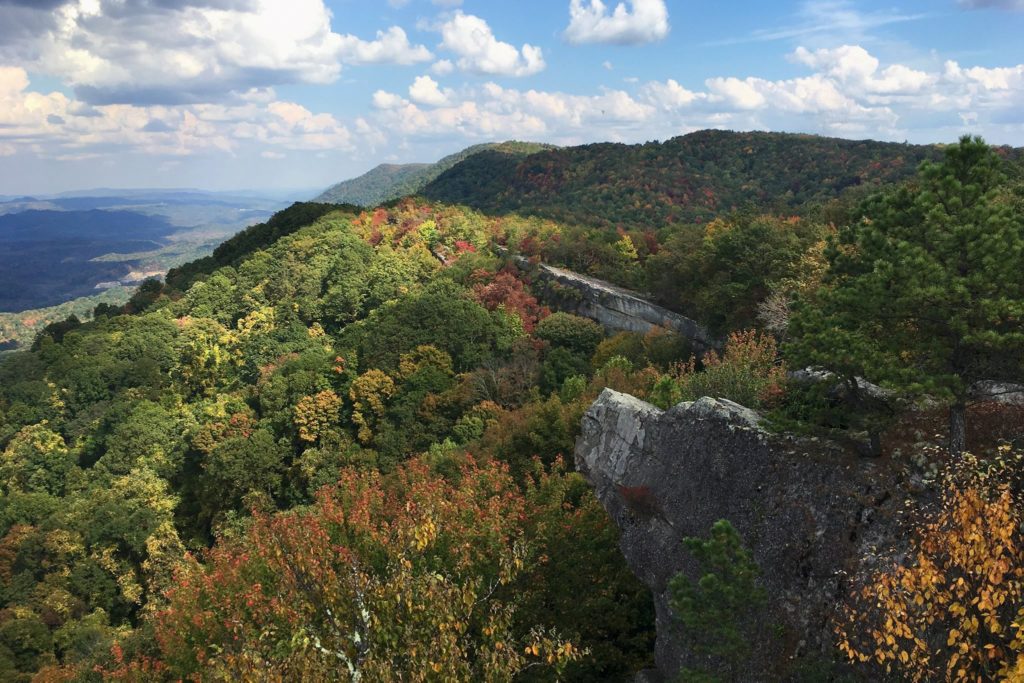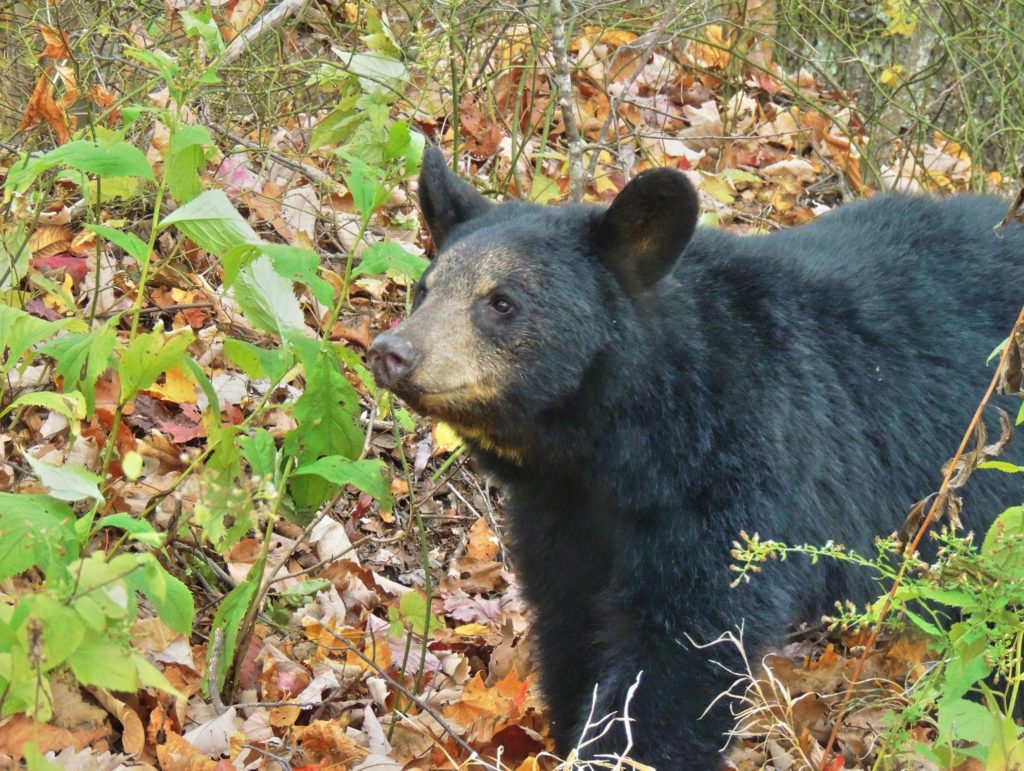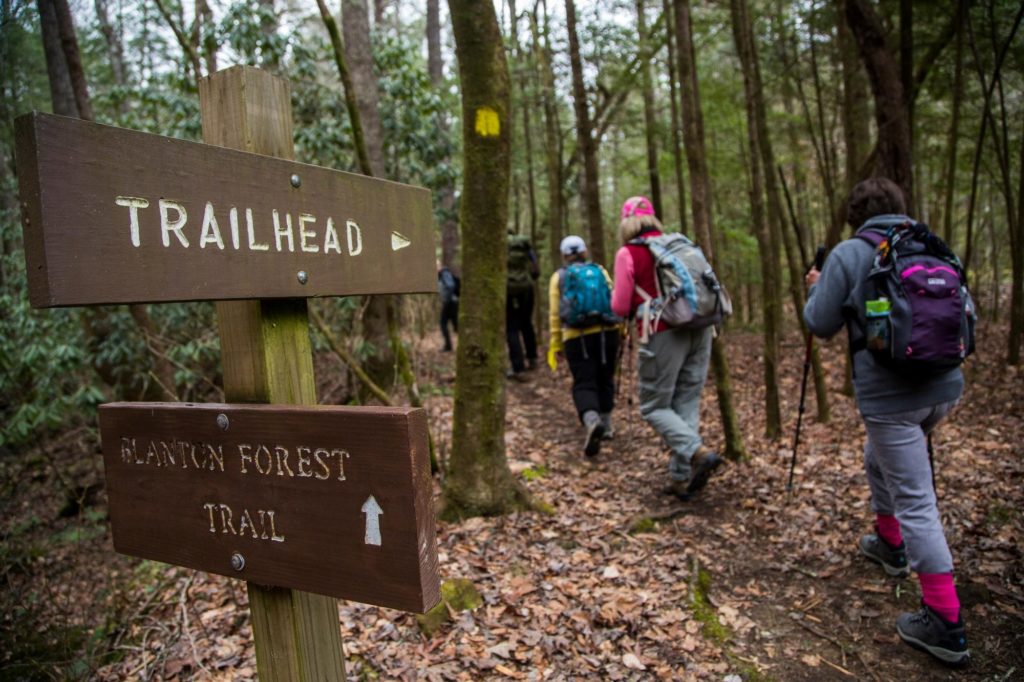Last updated on February 10th, 2024

Conservation of large intact landscapes is essential to protecting biodiversity and maintaining ecosystem functions and resilience. “When we look at protecting high biodiversity regions within landscapes that are considered to be climate resilient, there’s an opportunity to take local action that really transcends to global significance,” says Greg Abernathy of the Kentucky Natural Lands Trust (KNLT). Through the Pine Mountain Wildlands Corridor, KNLT is working to connect existing protected areas along Pine Mountain to form a 125-mile contiguous forested migratory corridor in Central Appalachia from Virginia through Kentucky to Tennessee. The project is part a larger continental scale conservation effort known as the Eastern Wildway.
Large forest tracts are important to safeguarding plant and animal populations and are vital to the overall health of the forest itself. Healthy protected forests serve as natural carbon sinks, storing huge amounts of carbon and keeping it out of the atmosphere. The U.S. Forest Service has found that, on average, American forests store 158,000 pounds per acre of carbon (above and belowground), and each tree continues to sequester additional carbon annually throughout its lifespan. With 180,000 total acres in the Pine Mountain Wildlands Corridor, the EPA’s Greenhouse Gas Equivalencies Calculator estimates that this area alone accounts for the emissions from more than 1.7 million homes for one year.
Central Appalachia, including Pine Mountain, is a region considered to be one of the most biologically diverse temperate zone forests on the entire planet. This biodiverse forest is home to thousands of species of plants and animals, species that are foundational to the life support system on planet Earth. The region is also considered to be climate resilient – thus the ecosystems, plants and animals found here are better positioned to adapt and persist in the face of climate change. The forests of this region are a globally significant carbon sink, and their protection is critical to addressing the climate crisis.

Central Appalachia has a history of extensive resource extraction, including limestone and coal mining, logging, and natural gas drilling. Forest conversion and fragmentation resulting from these activities impacts overall ecosystem health. The region is also undergoing a generational shift in landowners that is further fragmenting the ownership of these wild places making conservation much more complex. Although free of merchantable coal, extraction remains a threat to Pine Mountain, however, conservation and the resulting public lands are becoming a valued asset as the region transitions to a more diversified and sustainable economy.
Large landscape conservation depends on the power of partnership. Through a public-private partnership, KNLT and its conservation partners have protected over 69,000 acres — nearly 40% of Pine Mountain. The result is a matrix of conservation lands that protect vital habitat and headwater streams while providing outdoor recreation opportunities. The primary conservation tool used on Pine Mountain is direct purchase of land from willing sellers. Acquisition and protection of these wildlands is only possible with funding which has come from a mixture of private philanthropy, foundations, government agencies and mitigation funds.
Science-driven and Community-minded Conservation

Pine Mountain Wildlands Corridor project is a great example of KNLT’s science-driven and community-minded conservation. The project serves as a natural climate solution that mitigates both local and regional climate threats while providing additional environmental, social, and economic benefits, all of which are foundational to the pillars that drive KNLT’s work:
Biodiversity: The foundation of life on the Planet is dependent upon intact ecologically functioning natural systems. Pine Mountain has some of the most biodiverse forests in the state and is within Central Appalachia, home to one of the most biodiverse temperate zone forests on Earth. These forests are vital carbon sinks.
Climate Resilience: Central Appalachia, including Pine Mountain, is a geography with an extremely varied landscape that is considered to be climate resilient. The plants, animals and intact natural systems found here are better positioned to adapt and persist in the face of climate change.
Just Transition: Protected wild places are important to cultural, human, and economic health. Conservation lands foster outdoor recreation, tourism, and livability for local communities. Wildlands are vital to communities undergoing economic transition, like what is unfolding throughout Central Appalachia.
Watch this video from Kentucky Natural Lands Trust on Biodiversity and Climate Resilience to learn more.
Kentucky Natural Lands Trust is a nationally accredited nonprofit that has protected over 50,000 acres of wildlands from the mountains of Eastern Kentucky to the sloughs of Western Kentucky. Learn more by visiting: www.KNLT.org
